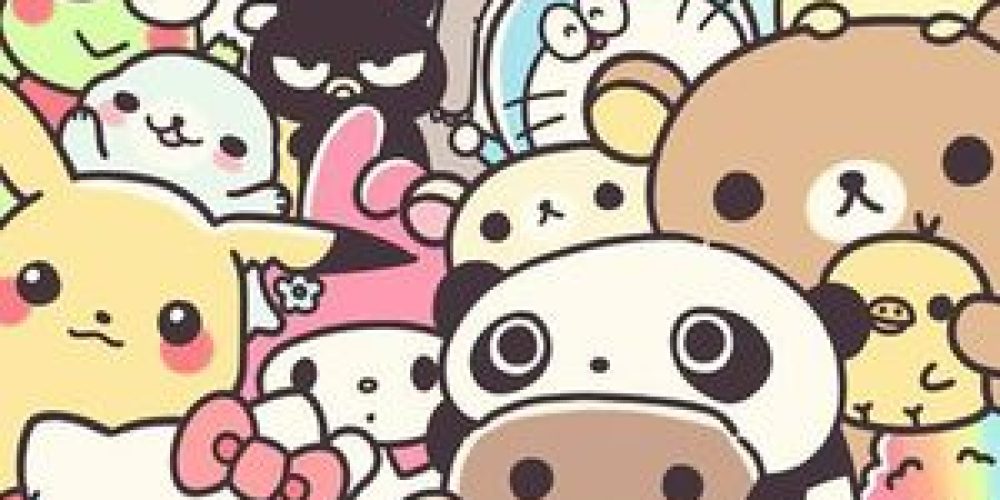THE BUSINESS MODEL ANALYSES THE ORIGINS OF CUTE CULTURE AND HOW IT AFFECTS MODELLING IN JAPAN.
By Jasmine Chorley Foster
When I was in high school, I had many friends who travelled to Tokyo to model in the summer months. My Facebook feed would suddenly fill with pictures of bright colours, bizarre Hello Kitty adorned items, and smiling faces accompanied by peace signs. My friends came home with glowing things to say about modelling in Japan – but were glad they wouldn’t be hearing the word “kawaii” for quite some time.
This cultural obsession with cuteness translates into casting decisions in an obvious way. As models know, stylists will koo over clothes that are “kawaii,” clients will love working with models who are “kawaii,” and the word is so pervasive that it’s virtually impossible to avoid it on set. Young models with big eyes and sweet faces continuously do very well in Japan. But the obsession with youth, sweetness, and cuteness goes far beyond the modelling industry.
The word “kawaii” is usually translated as ‘cute’ but is usually used to mean ‘cool’ or ‘beautiful.’ The word became widespread in the 1970s, and was preceded by the word “kawayuski,” meaning shy, embarrassed, pathetic, vulnerable, lovable, and small. All these characteristics carry on into the word “kawaii” and thus the people, behaviours, and objects that are described as “kawaii.”
The obsession with all things “kawaii” has come to dominate Japanese culture since the end of the last century. It’s so deeply entrenched in Japanese culture that it’s nearly impossible to separate the two. The phenomenon’s roots are credited to the 1970s trend of teenaged girls writing in child-like rounded characters, as well as the shorter fad of using ‘baby talk.’
As these trends began to take-off, the consumer boom was just beginning in Japan. Companies quickly realized they could capitalize on the cute trend that was so popular with young consumers. Sanrio, the Japanese company responsible for Hello Kitty, began producing stationary and journals decorated with “kawaii” slogans and designs – known as fancy goods. These early products were successful and Sanrio has had an unquestionable monopoly of the fancy goods market since the1990s.
These products were, and continue to be, formulaic. They must be small, pastel-coloured, rounded, soft – much like the toys you would purchase for an infant. This is why you’ll see rounded apartments in Roppongi; Tokyo’s entertainment district and the wealthiest part of the city. The message behind these objects is that they were the opposite of traditional Japanese cultural aesthetics. If figures such as the emperor or samurai represented the past, then Hello Kitty represented modernity, the future, and opportunities.
Another feature of kawaii products was, and is, the mascot; Hello Kitty being the most obvious and successful example. The kawaii mascots are cartoon characters who appeal to customers because they appear loveably helpless. As Sharon Kinsella describes, their bodies are soft, round, and infantile, they usually lack arms, legs, and mouths, and thus they are non-sexual, mute, insecure, and helpless.
Even though the mascot and the purpose of the product are unrelated, the mascot adds cheerfulness and personality to virtually any object. These figures appear on every imaginable object; from candy and sex toys, to toilets and airplanes. As anyone who has been to Japan knows, it’s a country of strong work ethic and very little time to make personal connections or relax. Adulthood is also perceived by young people as a bleak period of life, hence the popularity of returning to childhood – even if just through the
purchase of a kawaii product. As Kinsella writes, “Modern consumers might not be able to meet and develop relationships enough with people, but the implication of cute goods […] was that they could always attempt to develop them through cute objects.”
Cuteness swept through every possible industry, and clothing and fashion were certainly not exempted. White frilly underpants and socks, children’s hair barrettes, bows, and the colour pink are just some of the 1980s Japanese fashion staples that just haven’t gone away. Fashion magazines are one of the many products that allow adult consumers to revisit an idealized, magical, carefree childhood.
Fashion magazines, of course, require models. Whether or not the clothing is super kawaii, youth is still the beauty ideal. Big, doe eyes and round faces communicate innocence and youth, which is why models with these features do extraordinarily well in Japan. But why is the demand for Caucasian models in Japan so high? Japanese pop idols and actors are held up as icons of beauty, so why not Japanese models?
In Fashioning Models, Ashley Mears recalls a conversation with her booker in Tokyo who explained that to see a Japanese girl or woman on a billboard modelling lingerie would be truly shocking for a Japanese audience. The consumers would too easily relate to her sexuality, and the image would come-off as pornographic. Caucasians, on the other hand, are a tiny minority in Japan. Their sexuality is so foreign that there’s very little that is sexual about a Caucasian girl or woman in lingerie, or other revealing garments. Half-Caucasian, half-Japanese model Kate* said, «I can never do any of the sexy jobs, I always have to be cute or sweet.» Additionally, Japanese consumers see Caucasian models as American – a place and culture that, to them, seems much more spontaneous, carefree, and joyful than the serious, hard-working culture of traditional Japan.
Young, Caucasian models are therefore much like Hello Kitty, and other kawaii mascots. They are child-like, helpless, cute, non-sexual creatures who represent an imagined place of eternal youth and fun. Japanese clients and consumers project onto Caucasian models their dreams of an escape to an America where everyone is young, carefree, and yes, kawaii.







Comments 0